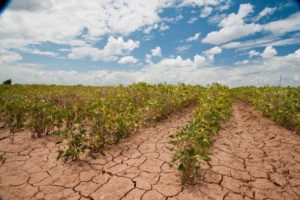Here is my latest commentary for Scientific American. I write that creating sustainable food systems in the face of a changing climate isn’t easy—but innovators around the world are making real progress.
 I argue that “[w]e need to move beyond thinking about the environment—our land, water and air—only as a source of inputs for the food system,” I write. “Instead we need to recognize that global environmental changes can diminish yields, reduce the amount of food we produce, and affect how nutritious it is and where we produce it.”
I argue that “[w]e need to move beyond thinking about the environment—our land, water and air—only as a source of inputs for the food system,” I write. “Instead we need to recognize that global environmental changes can diminish yields, reduce the amount of food we produce, and affect how nutritious it is and where we produce it.”
But change is not easy. How can leverage points in food systems and in institutions help us work toward solutions? I cover some solutions in my new book, Hot, Hungry Planet.
In my commentary, I write:
“Weather extremes and environmental shocks, for instance, will likely occur more frequently in the future. In California, the multi-year drought and recent lifting of the drought emergency after a heavy rain and snow year has had a cascade of lingering effects, calling for greater management of both extremes and making water conservation “a way of life” by executive order. The four objectives of California’s new management plan include educational and policy nudges such as using water more wisely, eliminating water waste, strengthening local drought resilience and water holding capacity, and improving agricultural water use efficiency and drought planning.
Any successful answer to feeding a hot, hungry planet will result from continual changes, shifts, and adaptation to an uncertain future. Figuring out where society can sustainably grow more food and how people might try to do that under climate change will be inextricably linked to national security, public health, and economic goals. Food system challenges in a changing climate have already led to political instability in some places, and migrations and tensions over changing amount and location of natural resources are likely to grow.
Creating sustainable food systems that deliver nutritious food while also satisfying long term food security is a complex undertaking, as I learned over the past few years while writing and researching my new book Hot, Hungry Planet: The Fight to Stop a Global Food Crisis in the Face of Climate Change. I met with the people who are working at the issue from every angle. The farmers, agronomists, and researchers I talked with are trying to fulfill economic, social and environmental objectives while not compromising prospects for future generations.”
To continue reading, please go to my piece in the Observatory blog in Scientific American.